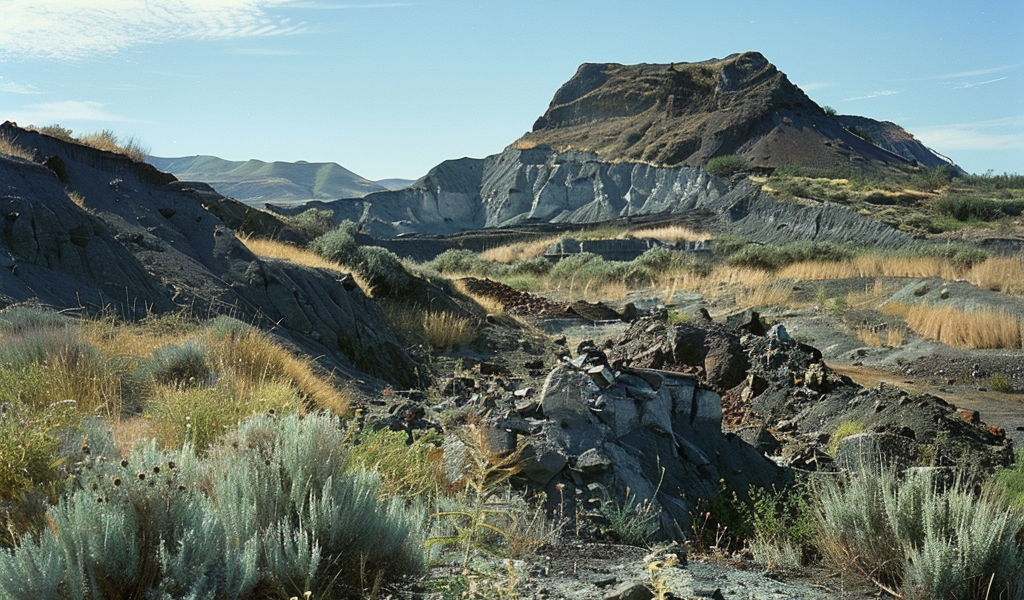Recent research has unveiled a fascinating discovery regarding extinct volcanoes around the globe, suggesting that their mysterious magma may hold vast deposits of rare earth elements. These elements are essential for powering modern technologies such as electric vehicles and wind turbines, marking a significant step forward in the quest for sustainable energy solutions.
Rare earth elements, including lanthanum, neodymium, and terbium, play a pivotal role in the transition away from fossil fuels, which have long contributed to environmental degradation. Despite their name, these elements are not particularly rare; however, their extraction poses challenges due to their low concentrations in natural deposits. As the demand for these materials surges, many nations are actively seeking new sources to reduce their reliance on China, which currently dominates the rare earth supply chain.
The groundbreaking study, conducted by researchers from the Australian National University (ANU) and the University of the Chinese Academy of Sciences, was inspired by the discovery of a substantial rare earth deposit in Kiruna, a mining town in Arctic Sweden. This area is notable for its rich iron-ore reserves, formed approximately 1.6 billion years ago following intense volcanic activity.
Researchers were intrigued by the presence of rare earth elements in Kiruna and sought to understand whether their existence was merely coincidental or if the iron-rich nature of the volcanoes contributed to the concentration of these valuable materials. Michael Anenburg, a research fellow at ANU and co-author of the study, emphasized the rarity of observing iron-rich magma in active volcanic eruptions, stating, “We have never seen an iron-rich magma erupt from an active volcano, but we know some extinct volcanoes, which are millions of years old, had this enigmatic type of eruption.”
To investigate further, the scientists created a simulated magma chamber in their laboratory, utilizing a synthetic rock that mirrored the composition of the magma found in these ancient volcanoes. By placing the rock in a pressurized furnace and subjecting it to extreme temperatures, they aimed to replicate the conditions under which rare earth elements might be absorbed by the magma.
The results of their experiment were striking. Once the synthetic rock melted and transformed into magma, it exhibited an impressive ability to absorb rare earth elements from its surroundings. The study concluded that this iron-rich magma was up to 200 times more efficient at concentrating rare earths compared to the magma typically produced by active volcanoes.
This discovery opens up new possibilities for rare earth extraction, highlighting the potential of utilizing ancient volcanic formations as sources for these critical materials. As the global community continues to seek sustainable energy alternatives, tapping into the resources within extinct volcanoes could play a vital role in meeting the rising demand for rare earth elements.
The implications of this research extend beyond just the scientific community. For industries reliant on rare earth elements, such as renewable energy and electric vehicle manufacturing, this newfound knowledge could lead to more accessible and diversified sources of materials, reducing dependence on a single country and enhancing global supply chain resilience.
As nations grapple with the challenges of climate change and the need for cleaner energy solutions, the potential of utilizing rare earth elements from ancient volcanic activity represents a promising avenue for future exploration and development. The study not only sheds light on the geological processes that could lead to the concentration of these elements but also paves the way for innovative approaches to resource extraction that align with environmental sustainability goals.
In summary, the exploration of extinct volcanoes for rare earth elements could significantly contribute to the transition towards cleaner technologies. As researchers continue to delve into the mysteries of these geological formations, the hope is that they will uncover even more insights that can facilitate the shift away from fossil fuels and towards a more sustainable future.





